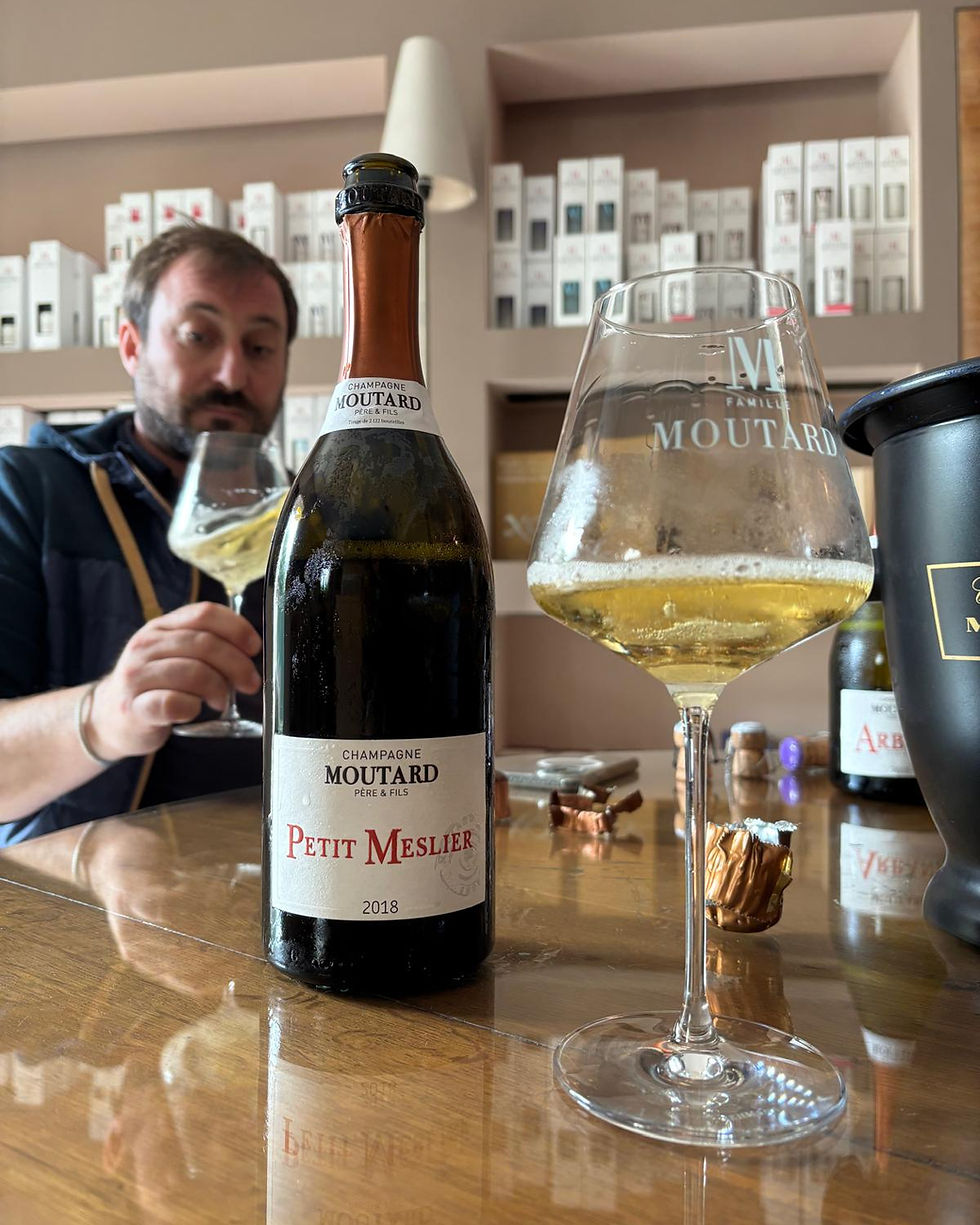Five Cuvées To Seek Out From The Next Generation of Cult Growers!
- Antoine Hugot

- Oct 20, 2020
- 4 min read
Updated: Apr 20, 2024
Words by Antoine Hugot
A hundred years ago, in 1919, Champagne demarcated its vineyard by establishing a hierarchy of its villages or crus. A scale that is “disappearing” but still used, leaving more space for diversity and biodiversity in Champagne. In the footsteps of Anselme Selosse, this new generation is concerned about sustainable development giving back to the land what it gives and produces authentic wines taken from a unique terroir from their crus.
Today, I would like to highlight some of them from different parts of Champagne and make their mark unscathed from the “Big Boys”.
1. Champagne Pertois-Lebrun, Cramant

The Pertois-Lebrun brothers produce champagnes coming from Chardonnays planted on 9.7 hectares of the Côte des Blancs. All plots are classified Grand Cru and are subject to biodynamic tests (mechanical tillage to replace herbicides, aromatherapy). Their vintages are distinguished by their freshness and finesse combined with a beautiful maturity of the grapes. The young generation which started between 2007 and 2013 currently produce around 30’000 bottles including vintages, a solera, and two single vineyard wines. In the next few years they will be releasing a low sulfur blanc de blancs, and single cru Grand cru blanc de blanc range. And watch out for the exclusive magnum releases!
My favourite wine : "Le Fond du Bateau” Chouilly Plot Extra-Brut/ 100% Chardonnay

Why? A mythical plot just down below Le Montaigu and close to Oiry Grand Cru Village plots. Some of the most sought after chardonnay grapes in the AOC.
2. Champagne Antoine Bouvet, Mareuil-sur-Aÿ

Here is proof that age is just a number! At 27 years old, Antoine is now at the head of his own brand and has run the entire vinification since 2016.
The vineyard is made up of 5ha from the villages of Avenay Val d’Or, Bisseuil and Mareuil-sur-Aÿ. With is grandfather Guy, Antoine creates no more than 1,000 bottles per cuvée. Each parcel is cultivated according to their features, with grass cover or/and ploughing.
The use of chemical herbicides has been completely abandoned since 2016. 40% of this year’s cultivation is biodynamic. The addition of sulphur during the vinification is very limited.

My favourite wine : Brut Nature Millésime 2014 / 50% Chardonnay-50% Pinot Noir
Why? Pure, mineral and complex chardonnay from the right bank of the Marne Valley, true challenge, well-mastered.
3. Champagne Pierre Baillette, Trois-Puits

One of the most talented women out there: works on 3.65ha of vines between Rilly-La-Montagne, Trois-Puis and Verzenay. Like in her husband, Alexandre Chartogne's vineyards there have been no pesticides since 2010.
She also tries to use heavy machines as little as possible, replacing them wit horses who are much lighter and don't compress the soil. Incredibly devoted to her terroir, she only produces around 13,000 bottles using only indigenous yeasts for the alcoholic fermentation, very low dosage and ageing is between three to six years into bottle before release.
My favourite wine : “Coeur de Craie” Rilly-La-Montagne Extra-Brut/ 100% Pinot Noir

Why? A feminine touch for a lovely Pinot Noir. Such a smooth Champagne !
4. Champagne Guiborat, Cramant

Among the smallest producers of the Côte des Blancs, Richard Fouquet is the fifth generation at the head of the Guiborat family estate and produces around 30’000 bottles each year.
Playing essentially with Chardonnay from Grand Cru villages of Cramant, Chouilly and Oiry, he also works on new challenges such as 100% Pinot Meunier from Mardeuil, a tribute to the family's first harvest in 1890. Richard is seen as a “purist”: committed to a strong approach to preserving the environment and a perpetual quest for excellence for precise and refined champagnes. Their profiles are as close as possible to their terroir because of Richard's brilliant combination of tradition and modernity.
A new generation winemaker, to discover absolutely.
My pick of his range: “Mont-aigu” Vintage 2008 / 100% Chardonnay

Why? In my opinion, one of the best expressions of the terroir sometimes compared to « Montrachet » in Burgundy. Today, 2008 is THE mythical vintage everyone is talking about. A 100% Chardonnay from Chouilly on the Côte des Blancs, malo blocked, 60% in stainless steel, 40% in Oak barrels, and 84 months on lees to stand out the best. On the first nose we get green apples, crushed grass, rainwater, chalk board, then the second nose shows more lemon candy, peachy aromas, hazelnuts, nuts or bread, with piercing acidity. On the palate... what complexity! A full-bodied champagne, well-balanced, very straight, fresh and refined. Between sour green apples, citrus and pastry, yeasty notes. A very long finish on peachy aromas...
5. Champagne Cazé-Thibaut, Châtillon-Sur-Marne

Fabien Cazé started working in 2013 on vineyards of 2.66ha divided in six different parcels with a true diversity. He is located on the right bank of the Marne River, yet in the heart of Vallée de la Marne, allowing him to create champagnes with a strong and unique identity. Before taking over the Maison, he was a former intern at “Champagne Chartogne-Taillet”, which enabled him to master vineyard management: working soils by grazing or ploughing down, which is a tradition they use to support the growth of the vine and optimise the ripening of their grapes. Obviously, they do not use herbicides or pesticides in general, adopting the best principles of biodynamic agriculture.
My favourite wine : “Les Fourches” Extra-Brut 2014 /100% Chardonnay

Why? Pure, mineral and complex chardonnay from the right bank of the Marne Valley, true challenge, well-mastered.




.jpg)















Comments